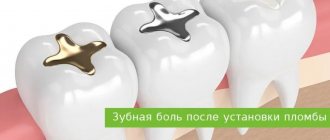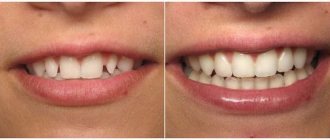The most common form of jaw injury is a bruise. No one is immune from this. For example, with a strong blow to the jaw, soft tissues, blood vessels, and capillaries are affected, resulting in the formation of hematomas and swelling. This is accompanied by severe pain and discomfort.
To avoid complications, it is recommended to consult a doctor immediately after injury. The fact is that impaired jaw function entails a chain of negative consequences: difficulties while eating, deterioration in the quality of spoken speech, etc.
What causes bruises?
Jaw injury may result from:
- falls;
- blow;
- fights;
- children's games;
- accidents, etc.
The severity of the injury is determined taking into account the following factors:
- features of the surface or object that caused the injury;
- impact intensity;
- affected area of the face;
- condition of bone tissue before the incident.
The strength of the bruise and possible complications depend on the listed indicators. Regardless of the severity, it is important to see a doctor to evaluate the condition and prescribe appropriate treatment. This will avoid unforeseen consequences and quickly restore the damaged area.
A little anatomy
The most prominent part of the head is the jaw, so it is easier to hit. A direct blow to it leads to a sharp turn of the head, as a result of which the brain hits the wall of the skull. As a result, the brain stem and cerebellum, which are the body's balance control center, suffer. A person receives a concussion, which manifests itself in long-term or short-term loss of consciousness, confusion of thoughts and complete disorientation in space.
When a blow is struck to the lower jaw, the inner ear is damaged, which is not only an organ of hearing, but also of balance, so a person who has received such a blow often falls.
Clinical picture
First of all, the doctor conducts a visual examination of the bruised area to identify hidden injuries that cannot be identified by a person without medical education. For example, symptoms of dislocations or fractures may not appear immediately. Professional consultation allows you to begin timely treatment, if required.
To recognize a jaw bruise, it is important to pay attention to the following symptoms:
- severe pain in the place where the blow fell, intensifying when pressed;
- visual signs (eg, swelling, redness, abrasions, bruises);
- limitation of jaw mobility when yawning, talking, chewing;
- inflammation of the lymph nodes;
- general weakness.
Jaw bruises are less dangerous than more severe injuries, so recovery is usually quick.
The doctor may order an x-ray or computed tomography to establish an accurate diagnosis. These studies will assess the condition of the internal tissues of the affected area.
Treatment of jaw dislocation
A dislocated jaw is treated simply: the doctor realigns the joint, placing the bone in the right place. Muscle relaxants or painkillers may be needed to relax tight muscles.
Then the jaw must be secured in a stationary state. To do this, the doctor applies a bandage. If the dislocation does not appear for the first time, then surgery will be needed to straighten it.
Recovery after a dislocation lasts 6 weeks. At this time, you should not open your mouth wide. When yawning and sneezing, the lower jaw should be supported with your hands.
Primary treatment
A bruise can be diagnosed by external signs even before seeing a doctor. To eliminate pain and discomfort, it is recommended to perform the following measures:
- apply a tight bandage;
- Apply a cold compress to the bruised area.
For quick and painless treatment, the face must be at rest. It is better to avoid warming compresses, as they can lead to the development of inflammatory processes.
The consequences of bruises can be such conditions as fractures, fractures, dislocations of the hard tissues of the jaw and even a concussion. Treatment differs depending on each case, so you should not self-medicate. It is also worth noting that most injuries have similar symptoms, so they are easy to confuse. Only a doctor can make a correct diagnosis. If you cannot go to the hospital yourself, it is recommended to call emergency medical help.
Medical care for jaw injuries
There is no specific treatment plan in such cases. But there is a list of general recommendations. Visits to the doctor are usually limited to one visit to evaluate the x-ray or CT scan.
If the patient escaped with an ordinary bruise, then treatment will be carried out at home. The patient will be given a bandage to hold the bones in the correct position. As mentioned above, you need to apply cold compresses. Ice, snow, and sterile gauze moistened with cold water are suitable for these purposes. Warming the affected area is contraindicated to avoid inflammation and worsening the clinical condition.
To eliminate pain, taking analgesics is allowed. Following simple rules will allow you to quickly get rid of the consequences of a bruise and return to your normal life.
Likely consequences
Any injury with negligence and non-compliance with medical recommendations can lead to all sorts of complications. If we talk about a bruise of the jaw, then it can develop into a post-traumatic form of periostitis, myositis or deformation of bone tissue. Any complications will require lengthy and likely expensive treatment. Injury to the masticatory muscles can cause limited mobility of the lower jaw, complicate chewing and swallowing, which directly affects the state of the gastrointestinal tract and metabolic functions of the body.
Treatment of a jaw fracture
Treatment depends on the extent of the fracture. If the patient has a small crack in the bone, it will heal on its own. The doctor will only prescribe a painkiller.
Severe fractures require surgery to allow the bones to heal properly. After surgery, a bandage is applied to the jaw to allow it to heal quietly. The jaw takes 6 to 8 weeks to heal. At first, elastic bandages are additionally applied, which are then removed to allow the muscles to be developed and their mobility restored.
During treatment you can eat only liquid food. You should always have scissors with you to cut bandages in case the patient suddenly chokes on something or starts vomiting. Then go to the hospital to have a new bandage applied.
What happens to the jaw after a blow?
The jaw borders the inner ear, so a blow to it leads to minimal disorientation in space. The most dangerous consequence is its fracture. It can be either single or multiple. It all depends on the strength and vector of the blow received. The weight of the fighter and the degree of rigidity of the glove he uses are essential.
A jaw fracture is extremely unpleasant. It can be suspected in the presence of severe pain, and it can manifest itself both in the lower jaw and at the junction of it with the upper part, which borders the ear. It is worth noting that this syndrome is mirrored, that is, when the right side is fractured, the pain radiates to the left, and vice versa.
A jaw fracture is a serious injury that can cause damage to the cervical spine. It really unsettles a person. In some cases, with such fractures, a person cannot open his mouth, in others, it opens, but the jaw moves to the side.
Considering all of the above, we can state that there are at least two reasons for loss of consciousness from a blow to the jaw: a concussion and a lack of coordination. However, we should not forget that a blow to the jaw can lead to a fracture.
Jaw displacement
One of the most common types of injuries is jaw displacement. The fact is that it is very easy to get such an injury, sometimes even unnoticed by yourself, for example, when actively chewing food or yawning. To avoid complications and surgery, it is better to treat a dislocated jaw immediately.
The lower jaw is connected to the temporal bone by two joints, the heads of which fit into the articular fossae. This gives us the ability to talk, chew and perform other movements. Signs of a dislocated jaw appear instantly, so the problem is easily diagnosed. When the heads pop out of the articular sockets, the jaw “jams” in the open position. This is accompanied by pain in the temporal bone area.
Causes of jaw dislocation
Displacement of the lower jaw occurs for the following reasons:
- sudden movement of the jaw in the process of chewing food, laughing, yawning, screaming;
- physical impact, for example, from a fall, impact;
- unprofessional reduction of the joint - if the person tried to solve the problem on his own;
- diseases of the skeletal system and joints, such as arthritis, arthrosis, rheumatism;
- displacement due to constant excessive load on the jaws;
- congenital anomalies of the temporomandibular joint;
- opening hard packages with teeth.
How to understand that a shift has occurred
Jaw displacement is difficult to miss. Dislocation can be anterior, posterior, unilateral or bilateral. The degree of complexity of a dislocation depends on the type of injury and is expressed by the following signs:
- with anterior displacement (when the jaw moves forward), the mouth freezes in an open position, pain appears in the parotid area, profuse salivation begins, and the proportions of the lower part of the face are disturbed;
- if the dislocation is posterior (the jaw goes back), then in addition to sharp pain, it becomes difficult for the person to breathe and swallow saliva, and it is almost impossible to open the mouth;
With complicated dislocations, bleeding from the ears, hematomas in the parotid area and swelling in the joint area are possible.
How to diagnose a dislocation
An experienced doctor can easily diagnose jaw displacement using a general examination and palpation. But in order to exclude the possibility of a fracture and make the most accurate diagnosis, an X-ray examination is prescribed, as well as a computed tomography or MRI of the joint.
How to treat jaw misalignment
In most cases, dislocation is treated by manual reduction. There are several methods of treating trauma: the Hippocratic method, the Blechman method, the Popescu method and a number of others. The exact method to treat a dislocation is determined only by the doctor, depending on the specific case. The jaw realignment procedure is carried out as follows:
- The patient takes a comfortable semi-lying position so that his face is at the level of the doctor’s forearm.
- The doctor places his thumbs on the teeth and clasps the jaw from below with the rest.
- By carefully applying pressure, the specialist returns the jaw to its original position.
- As a result, the head of the joint returns to the fossa. A characteristic click occurs and the patient reflexively closes the jaw. This indicates that the problem has been resolved.
Immediately after the jaw is realigned, it is fixed with a tight bandage, which must be worn for a week. For a complete recovery and to avoid relapse, it is necessary to abstain from rough food for a while and minimize stress on the joints. As a rule, the outcome of the procedure is favorable. But in case of old or complicated injuries, surgical intervention under local anesthesia is required.
What happens to the brain after a blow to the jaw?
The human brain is very fragile. Any, even the most minor, blows to the head lead to damage. A blow to the jaw is the most dangerous for him. Let's tell you why and explain it using the example of Archimedes' law.
The brain is located in the upper part of the skull, and the jaw is a lever that allows you to move the brain off its axis without much effort. If its slight displacement causes discomfort, then a strong shake leads to a concussion. its source is precisely a blow to the jaw. Moreover, it does not matter with what force it was applied, since in this case it acts as a lever. According to the principle of Archimedes' law, using a longer lever allows you to apply less force.
Immediately after a blow to the jaw, the walls of the skull will begin to shift sharply to the side, while the brain will still remain in place. Then he will begin to move with them by inertia, but will lag behind them, as a result of which he will hit the protective walls. The resulting injuries lead to a concussion. This is where its protective function comes into play, the main goal of which is to “reboot” all body systems. It is at this moment that loss of consciousness occurs, and the brain becomes most vulnerable. If during the period of its “reboot” a person hits his head, he may fall into a coma.
Straight to the head
On July 23, Russian boxer Maxim Dadashev died in an American hospital from injuries received in the ring. Two days later, on July 25, Puerto Rican boxer Hugo Santillan died immediately after the fight. The media dubbed the last week of July “one of the worst in boxing history.” However, death from injuries received during a boxing match is far from uncommon. Revision N+1
I figured out why boxing can be considered one of the most dangerous sports.
Cause of death: knockout
In 11 rounds of his last fight, Maxim Dadashev missed 319 punches. With each round the boxer defended himself worse and worse. Before the final, 12th round, Dadashev's trainer Buddy McGirt threw a towel into the ring. This gesture signals the mentor's intention to stop the fight and remove his ward from the ring, admitting his defeat.
In sports, a knockout is a situation when, having missed a blow, one of the opponents cannot continue the fight while the referee counts from one to ten.
In sports medicine, knockout is a condition of an athlete characterized by dizziness, loss of orientation in space or even consciousness. The cause of knockout is usually injuries to either the head, or internal organs (spleen, liver, diaphragm, respiratory muscles; less often, the heart), or the neck in the area of the dilation of the carotid artery - the carotid sinus.
Typically, the boxer experiences a sudden drop in blood pressure (due to a concussion) or a sudden loss of muscle tone in the skeletal muscles. In this state, the athlete is simply unable to get up and continue the fight.
Maxim Dadashev was unable to leave the ring on his own: his teammates helped him get to the under-stand area, where the boxer lost consciousness. The athlete was taken from the MGM National Harbor entertainment complex to the hospital, where doctors diagnosed him with cerebral edema. It was not possible to save Maxim.
Expert opinion on the causes of death of Maxim Dadashev
The first mistake is that no one takes into account the cumulative effect, that is, the fact that [during the battle] the consequences of blows accumulate.
The second mistake is that of the seconds. In this particular example, the cornerman asks the boxer if he should throw in the towel and stop the fight. But not a single boxer in the ring will say: “Come on, stop the fight!” You should not have asked, but thrown it away.
The third mistake is the referee in the ring. He sees that the guy is “floating”, he should have [stopped the fight] too.
And one more mistake. [No one noticed that] against the background of a chronic subdural hematoma, which was gradually developing, [Maxim] after two new blows developed an epidural hematoma, which began to very quickly compress the brain, because it is located between the bones of the skull and the dura mater. It grows quickly: first a light gap appears, the person [still] feels normal, and after a while he loses consciousness and falls into a coma.
And finally there was another mistake, a purely medical one. He underwent a craniotomy, pumped out the hematoma, but the bleeding was not stopped. As a result of herniation of the brain stem, breathing stops.
Alexander Klochkov professor, former employee of the Sports Medicine Center
Share
And such cases are far from rare. Manuel Velasquez, one of the first public supporters of the boxing ban, began collecting the names of all boxers who died as a result of injuries based on news reports and archival data back in the 1940s. His followers continued the work, and the latest version of the list contains 1,865 deaths of athletes between 1890 and 2011.
Scientists from the University of California analyzed the death data of 339 boxers who died between 1950 and 2007 and found that in 65 percent of cases, death occurred after a knockout. In another 15 percent of cases - after a technical knockout, when the fight was stopped by the referee, doctor, boxer's second or the boxer himself due to circumstances (usually injuries or cuts) that prevented the fight from continuing.
"Frostbitten"
Of course, not all boxing fights end so tragically. But even light blows to the head leave an imprint on the health of athletes and often lead to the development of “boxer dementia.” This disease was first described by the American neurologist Harrison Stanford Martland in 1928.
Martland noticed that some titled boxers who have already finished their sports careers have a slightly sluggish speech, and a blissful smile does not leave their faces. Punch drunk.”
- “blow” and
drunk
- “drunk”).
There are many options for translating this expression into Russian, the most appropriate of which, perhaps, is “oh,” but they do not convey all the shades and nuances of the play on words.
This jargon found its way into the first medical description of "Boxer's Dementia." According to the observations of Dr. Martland, this condition, in mild or severe forms, is characteristic of half of the fighters who have completed their careers. He described in detail the symptoms of “Punch drunk” in the case of his patient, whose name is represented in the work by initials.
Patient NE began training in martial arts at the age of 16 and in 5 years built a successful career in boxing. At the age of 22, he suffered the first knockout in his life, after which he spent almost an hour unconscious. NE subsequently suffered another knockout and left boxing at the age of 23 due to limb tremors and partial loss of balance.
Over the next 15 years, NE's condition gradually worsened, and by the age of 38, despite good physical fitness and normal nutrition, he was partially paralyzed.
In modern medical nomenclature, the disease described by Dr. Martland is called chronic traumatic encephalopathy (CTE). Symptoms of CTE generally resemble those of Alzheimer's disease or Parkinson's disease. The similarities in the patients' histories are not coincidental: all of these diseases are caused by structural changes in the white matter of the brain and deposits of tau protein in its different parts.
Systematic, even mild, head injuries lead to the development of CTE. In boxers, the disease often develops 10-15 years after the end of their career, but it can also serve as a reason for leaving the profession.
Signs of encephalopathy have been observed in such professional boxing stars as Joe Louis, Al McCoy and Muhammad Ali, but only a few are officially diagnosed with CTE. In total, according to scientists, from 17 to 51 percent of athletes experience manifestations of “boxer dementia” of varying degrees of severity.
.
One of the last defeats of the legendary American boxer Al McCoy, who by this time was already suffering from chronic illnesses associated with his sports past. His opponent, Joe Louis, retired after being knocked out in 1951.
Boxing and head
Systematic head injuries, according to a former employee of the Center for Sports Medicine, Professor Alexander Klochkov, lead to rupture of the bridging veins between the dura and arachnoid membranes of the brain and, as a consequence, to the formation of a subdural hematoma.
Hemorrhage between the two meninges is difficult to diagnose using common methods because it is not visible with either a CT scan or an MRI scan.
To diagnose chronic subdural hematoma, it is necessary to use the method of functional monitoring of the condition of boxers, combining a number of indirect methods, and if there are suspected violations, send athletes for complex studies. The diagnosis can only be confirmed by an expensive positron emission tomography scan.
Ralph Thomas (1895–1924), one of the figures on the “Manuel Velazquez list,” died in the ring in New York after a missed blow to the heart
Share
According to Valery Plotnikov, twice USSR boxing champion, and now a professor at the Department of Rehabilitation, Sports Medicine and Physical Culture of the Pirogov Russian National Research Medical University, irreversible brain damage in boxers develops for a number of reasons.
Firstly, athletes receive most blows to the head during training, where equality between opponents in weight categories is often not maintained.
Secondly, medical control of boxers is not carried out fully enough. Sports doctors pay special attention to functional tests, but do almost no neurological studies.
And thirdly, at professional high-level performances, referees rarely interrupt the fight, even when the boxer receives a strong blow, essentially a knockdown.
“The easiest thing for the referee is for the opponent to finish him off in this position - and the fight is beautiful, and the referee is not to blame. But in fact, at the slightest sign of a concussion or inappropriate behavior, the fight must be stopped immediately in order to allow the boxer who missed the blow to recover, to give him the required 8 seconds,” says Valery Plotnikov.
By the way, chronic traumatic encephalopathy develops not only in professional boxers. Recently N+1
wrote about how American football players also suffer from this disease (“Amazing Football”).
With or without gloves
Oddly enough, the presence of protective equipment - mouthguards, impact-softening gloves, bandages - does not reduce, and sometimes even increases, the already high chances of getting serious head injuries in boxing.
In 1986, after a loud campaign against boxing initiated by the British Medical Association, a helmet became a mandatory element of boxing equipment.
Tests in which boxers beat sensor-covered dummy heads with and without a helmet demonstrated the effectiveness of its protection. Thus, the peak rotational acceleration when wearing a helmet decreased from 9164.10 to 5534.78 radians per second squared, the peak value of the resulting acceleration decreased from 78.04 to 51.79 gravitational acceleration (g), and the impact force decreased from 4260. 51 to 2815.59 newtons.
The results of the studies seemed to show that the helmet allows you to distribute pressure from the point of application of force over a larger area and reduce the likelihood of traumatic brain injuries.
However, judging by a study by Californian scientists, mandatory wearing of a helmet did not help reduce the incidence of deaths from injuries in the ring.
According to British doctors, a helmet only protects against severe damage to the skull, but does not in any way reduce the impact of blows to the head on the brain.
One of the shortest fights in professional boxing history (Zolani Tete vs. Siboniso Gonyea, 2017)
Boxing organizations, in turn, believe that the use of a helmet makes fights less spectacular, and in 2013 professional boxers were allowed to compete without them.
Gloves came into boxing at the end of the 19th century, when this sport was still the lot of amateurs. The main function of boxing gloves is to protect the hands from damage, and not the head at all.
In the 20th century, when boxing became a profession, the function of gloves did not change. Moreover, boxing gloves allow athletes not to think about protecting their hands and deliver most of the blows to the opponent’s head. For this reason, boxing without gloves, until recently banned in most countries, is now considered safer.
Blood in the ring and in the cage
Among martial arts, according to scientists, boxing can easily be called the most popular and one of the most dangerous. The second most popular type is mixed martial arts (MMA). And although the fights in them look much bloodier than those of boxers, they are much less likely to lead to the death of athletes.
In the official history of MMA since 1993, only four cases have been recorded in which injuries received during a fight resulted in death. Two of these cases resulted from unauthorized fighting.
In MMA, the rules allow the use of painful and choking techniques, as well as finishing off a downed opponent. Finishing moves sometimes look like a real bloody mess: they allow you to hit your opponent on the head (this mainly affects the ears, where the vessels of the perichondrium rupture, leading to the formation of a “cabbage ear”).
In some federations it is even allowed to finish off a lying opponent from a jump. True, recently the MMA rules regarding finishing moves have become somewhat stricter and referees interrupt fights if it is clear that a prone fighter is no longer able to fight.
At the same time, the fight itself in MMA lasts less than in boxing, and on average during the fight, a representative of mixed martial arts receives fewer blows (in professional jargon - “strikes”) than a boxer - 112.43 versus 144.60, respectively.
Oddly enough, it is the rules of MMA, which allow the use of a wider range of techniques and strikes than in boxing, that reduce the risk of one of the athletes receiving a head injury.
On the contrary, the rules of boxing impose many restrictions on the participants in the fight. Therefore, for them the surest way to defeat the enemy is to hit him on the head as much as possible. In such conditions, athletes receive more blows to the head and, because of this, are more likely to be knocked out.
Jose "Black Joe" Berhe (1919–1948), one of the names on the Manuel Velasquez list, died without regaining consciousness after being knocked down three times in one round.
Share
Canadian researchers from the University of Alberta, based on medical examinations that fighters are required to undergo after fights, compared the injury risk of the two most popular types of martial arts.
It turned out that after MMA fights, injuries were recorded in 59.9 percent of athletes, while among boxers the proportion of injuries was lower - 49.8 percent. The majority of these injuries in both martial arts were bruises and bruises.
“The blood that we see during mixed martial arts fights is taken from damaged vessels in the nose or damaged skin on the face; Although it looks quite severe, these injuries are not serious,” said lead study author Shelby Karpman.
But cases of loss of consciousness or serious head injuries were reported more often in boxing matches than in MMA - 7.1 percent and 4.2 percent of cases, respectively. In total, scientists analyzed records of medical examinations of 1,181 MMA fighters and 550 boxers.
Justified risk
The only measure that reduced the number of deaths in boxing matches, according to a study by Californian scientists, was reducing the number of rounds from 15 to 12 in 1983. Since then, the rules in boxing have not changed significantly.
The boxers themselves bear responsibility for injuries leading to serious consequences if the fight took place without violating the rules. From a legal point of view, these situations fall under the concept of reasonable risk.
In the event of a violation of the rules resulting in death or serious damage to the health of a boxer, the organizers of the fight usually take responsibility.
Thus, the largest compensation in US history for injuries received was paid to the boxer. In 2013, Russian athlete Magomed Abdusalamov suffered a serious skull injury during a fight with Cuban Mike Perce at Madison Square Garden in New York.
As a result, Abdusalamov developed cerebral edema and was put into an artificial coma, after which the athlete suffered a stroke. Abdusalamov's family, through the court, demanded compensation of $100 million from the New York state authorities for damage caused during the fight. After lengthy negotiations, the parties reached a settlement agreement in 2022 in the amount of US$22 million.
“Boxing is the only so-called sport where it is possible to win only by causing irreversible damage to your opponent. This is disgusting from the point of view of the ethics of basic medicine, which tries to prevent harm proactively,” says Bill O'Neill, scientific adviser to the British Medical Association.
The history of boxing has repeatedly experienced attempts to ban this sport as dangerous to health and life and unacceptable in the modern world. The largest campaign erupted in 1984 after a speech by the British Medical Association.
Individual attempts to ban boxing or exclude it from the program of the Summer Olympic Games continue to this day. But professional fights attract stadiums of many thousands and audiences of many millions of television viewers, bringing enormous income to the organizers.
Boxing organizations actively support the families of deceased athletes and regularly amend the rules after the most high-profile precedents.
This means that the series of severe, including fatal, injuries that boxers inflict on each other in the professional ring will most likely continue.
Nikita Lavrenov
Folk remedies
There are several proven, simple and at the same time effective ways to have the positive effects of alternative medicine. They are indispensable products for pregnant women, children, as well as people who have a severe allergic reaction to medications. You can make a choice based on personal preferences or doctor’s recommendations.
Treatment at home for bruises can be carried out using the following means:
- Table salt solution. Compresses are prepared from it, which are used for any complexity of bruises. To prepare, a tablespoon of salt is dissolved in 150 ml of boiled water. Then take a sterile bandage, soak it in the solution and apply it to the problem area. The compress is covered with a thick cloth on top. The gauze pad with salt can be left overnight.
- Grated potatoes. The tubers should be washed and cleaned first. Grate one tuber on a coarse grater, place in linen cloth and wrap several times. After applying the bruise, cover the top with a thick towel. Compressor exposure time is 30-40 minutes. For best results, make 3-4 applications in a row.
- Cabbage leaf. Before applying it, you should knead it a little or make cuts on it to let the juice out. The sheet is applied to the sore spot 2-4 times a day until it dries completely.
- Onion and garlic. The two ingredients are ground and mixed together. The resulting slurry is added with half a tablespoon of salt; it is recommended to wrap the mixture in gauze and place it in the area of the bruise.
- Beetroot and liquid honey. Finely grated root vegetables are mixed with a tablespoon of natural honey. The procedure is carried out 1-2 times a day for 2 hours.
- Laundry soap. This remedy helps reduce the pain response. The soap is grated and mixed with raw chicken yolk. I apply a compress every half hour up to 6-8 times a day. You can also rub a damp cloth with laundry soap and apply an application to the bruised area.
- Apple vinegar. This is one of the most effective remedies. To prepare the solution, you need to take 2 teaspoons of vinegar and dilute it in 1 liter. water. Soak a clean cloth in the solution and apply 3-4 times a day for half an hour.
Popular folk remedies for bruises
The video in this article shows how to properly apply a warm and cold compress for bruises.










